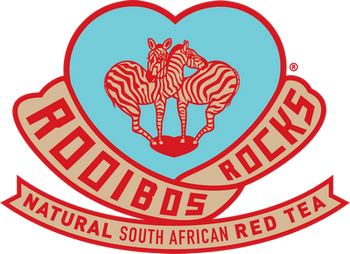Posted by Rooibos Rocks on
A cuppa all the way from the Cederberg – how Rooibos is harvested
Brewing a cup of deliciously refreshing Rooibos Rocks generally takes about five minutes.In that time, as you savor the sweet and earthy aroma, do you ever wonder how this precious beverage is produced? Put the kettle on and we’ll tell you!

Growing
The Rooibos bush only grows in the Cederberg Mountain region of South Africa.Nowhere else in the world has exactly the required combination of rocky terrain (well-drained sandy soil with exactly the right pH balance) and harsh climate.The plant is incredibly hardy and can withstand extremes of temperature that range from freezing in winter to a scorching 48°C in summer. Rooibos normally grows wild and is extremely difficult to cultivate as a commercial crop - the local farmers have to use several generations of specialist knowledge.Harvests are relatively small so each year’s crop is extremely valuable and handled with tender loving care.


Harvesting
When the bushes are 18 months old the plant is ready to be pruned.The crop is harvested by hand from January to April (during South African summer), being cut back to about 50 cm above ground.This is done with a hand scythe, gathering both the leaves and stems. Hand harvesting is supposed to be better for regrowth and budding.Each plant can only be harvested three or four times before it becomes unproductive.

Fermentation
Back at the farm the cuttings are sorted then fed into purpose-built machines that cut and bruise the vegetation.
The wet material is then spread out onto an outdoor drying court so that it can oxidize in the warm sun.
This process is often called fermentation but does not involve microbes like the fermentation of alcoholic beverages - it is caused by an enzyme called polyphenol oxidase. Through a carefully managed process of watering and drying it develops its distinctive aroma, taste, and reddish-brown color. This whole process is completed in just 24 hours. With Green Rooibos the oxidation stage is missed out, so rather than turning redder and sweeter it retains its green color and grassy mineral-like flavor.
Finally, the Rooibos is graded based on color, aroma, flavor and the length of the cut before being packed, either loose or in teabags.




Sustainability
The process is done on a small scale, much of it by hand.This provides valuable work and income to support about 5000 local people who live in the Cederberg region.The end product is 100% organic and natural, with no extra colors, additives or preservatives.All of which makes it taste even better from an ethical point of view.

A personal note
The team at Rooibos Rocks only lives about two hours from the Cederberg Mountains and we love to go to the Rooibos farms during the harvesting season.It’s great to see the bundles of freshly harvested branches and spines coming in and being processed, then watching our own Rooibos Rocks product being packed for us.There’s a wonderful atmosphere and a lot of friendly banter as pretty much everyone involved has grown up together – it’s like being part of a big Rooibos family!
Enjoy
Your cuppa should have brewed by now – hopefully the story of how Rooibos is harvested will help you to enjoy it even more.We’ve even got a video for you to watch while you are enjoying your Moment of Calm in a World of Crazy.

Share this post
- Tags: rocking news, Tea lovers gifts




